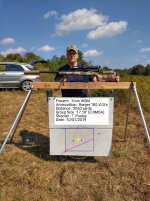Curious what size target you are using for shooting in the 1500-2000 yd range?
I've making pretty consistent hits on a full size IPSC at 1500yds with my 300 PRC And I'm ready to push further. Was thinking of maybe going with a 24"x24" square to give myself a little more room for error as the wind can make things a little tricky on the IPSC at 1500.
I've making pretty consistent hits on a full size IPSC at 1500yds with my 300 PRC And I'm ready to push further. Was thinking of maybe going with a 24"x24" square to give myself a little more room for error as the wind can make things a little tricky on the IPSC at 1500.


